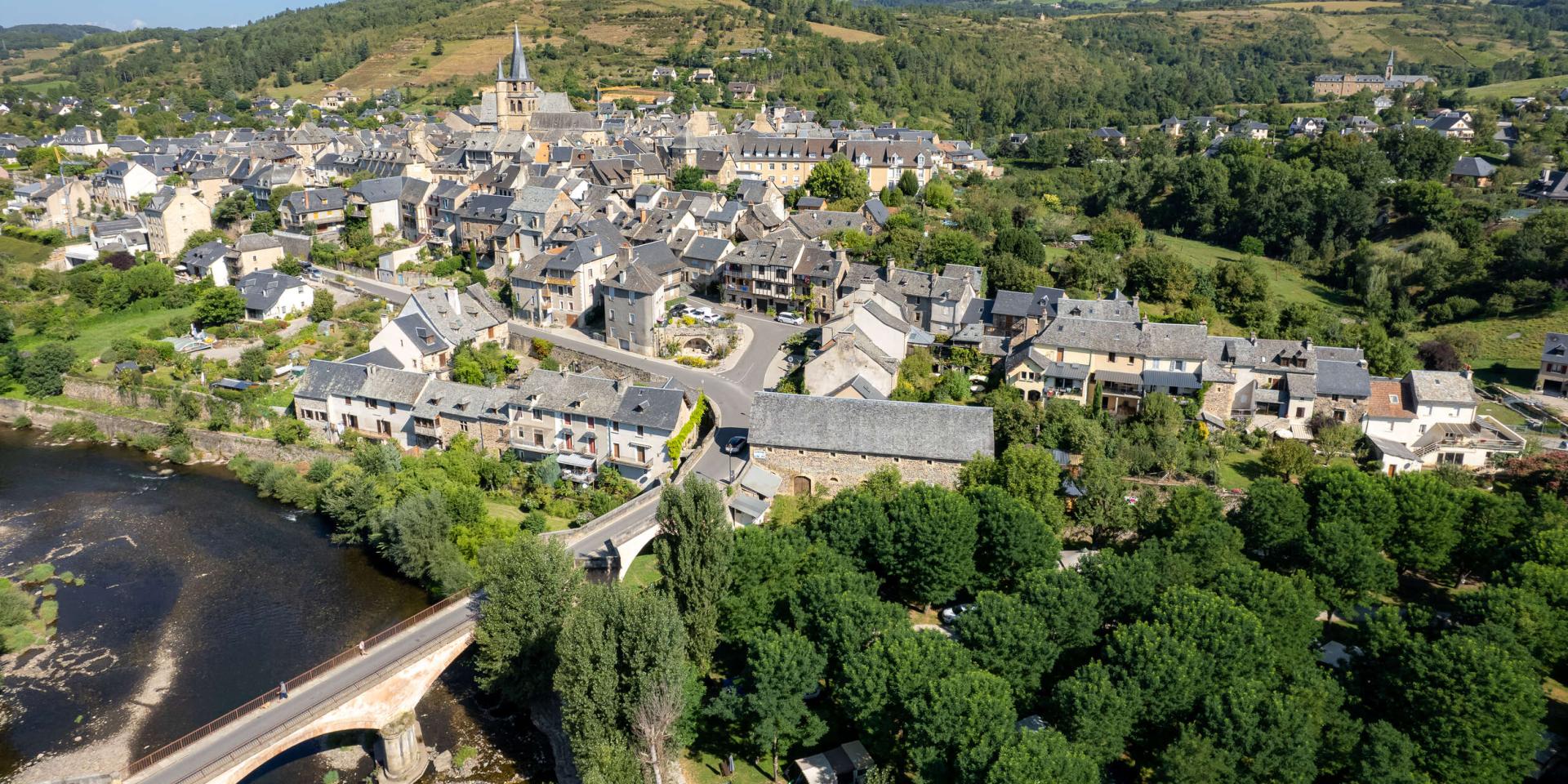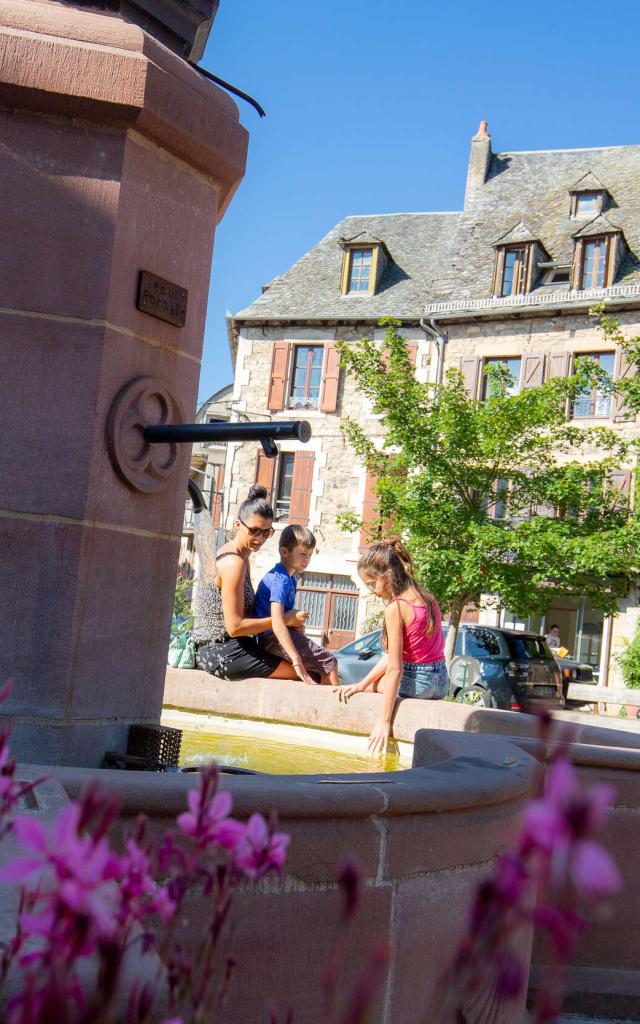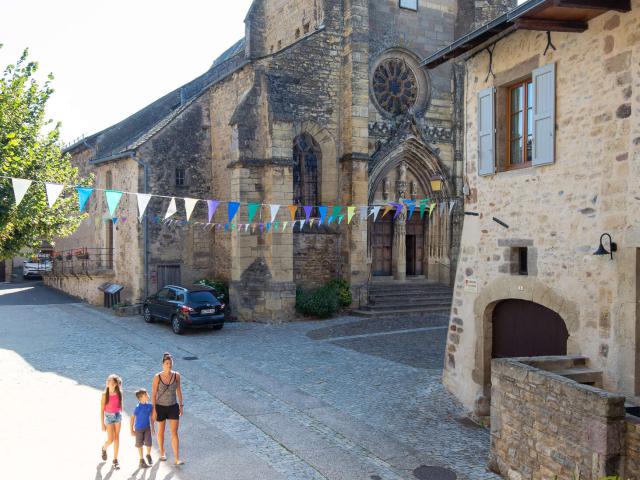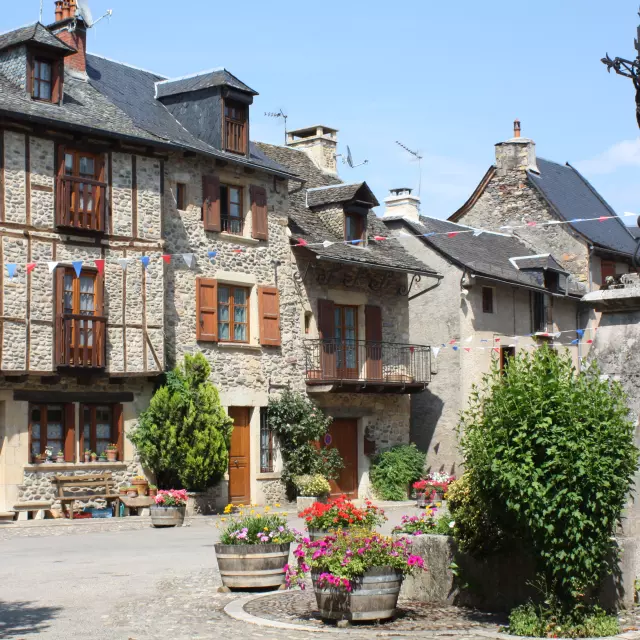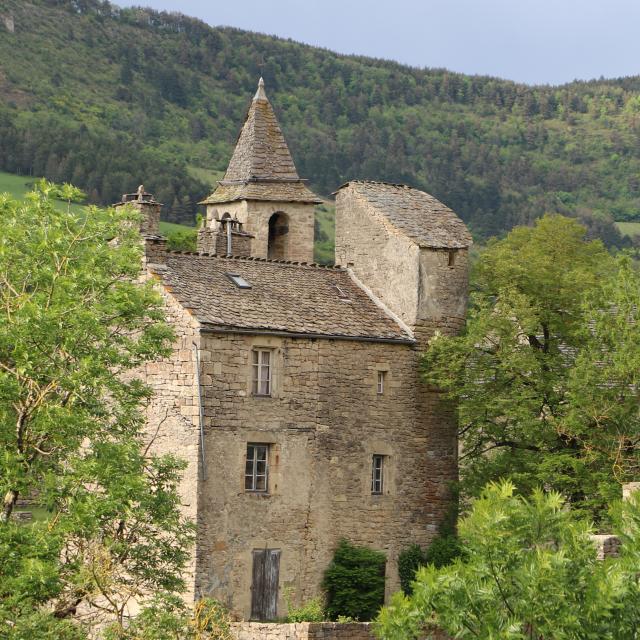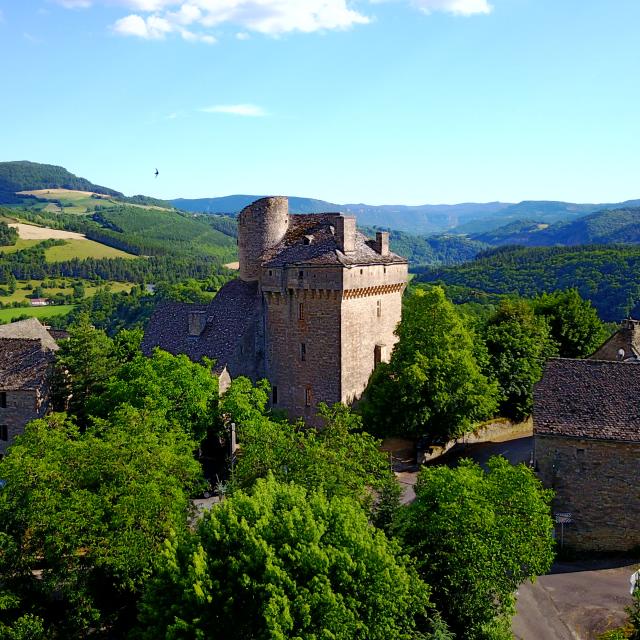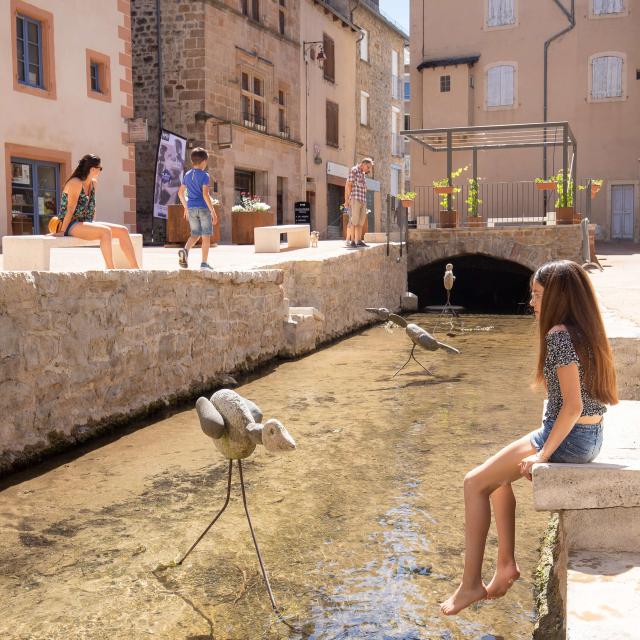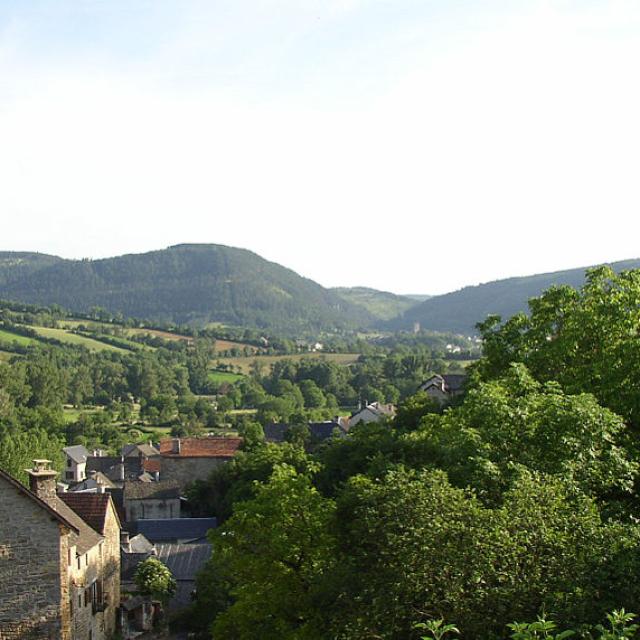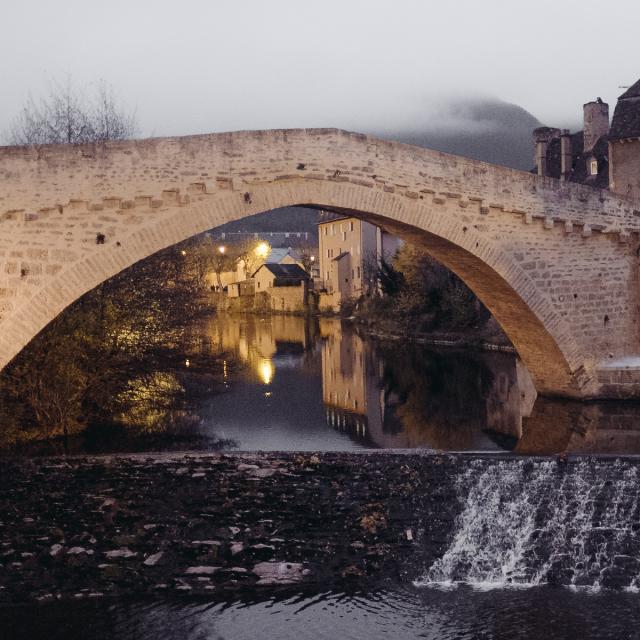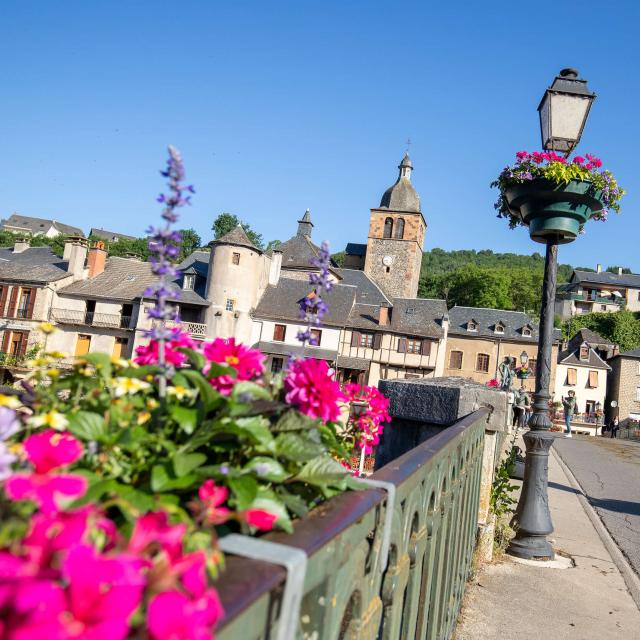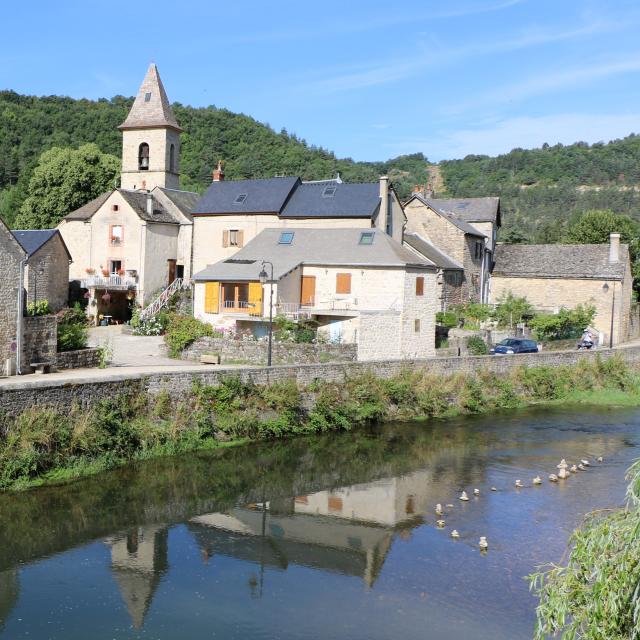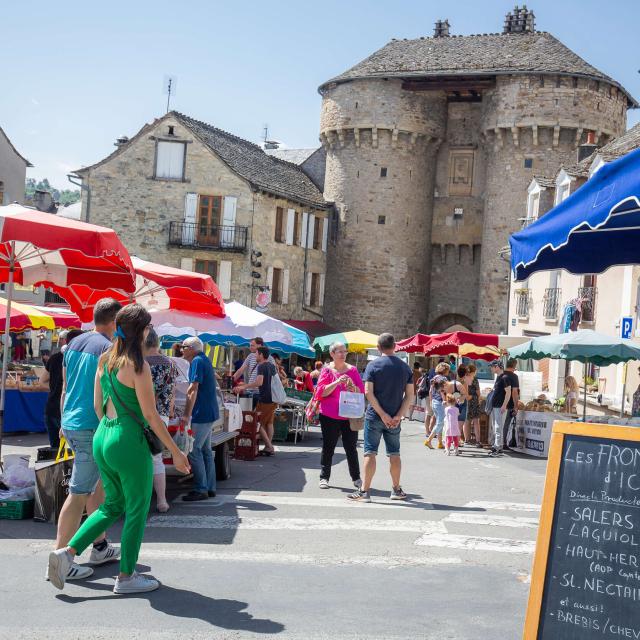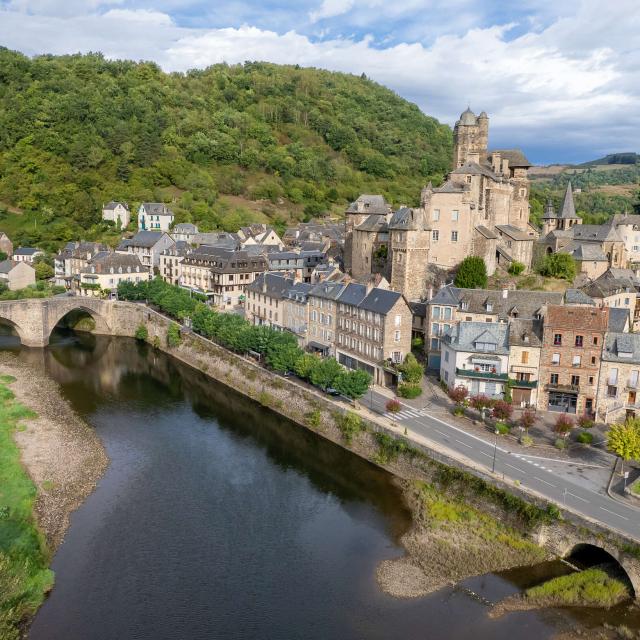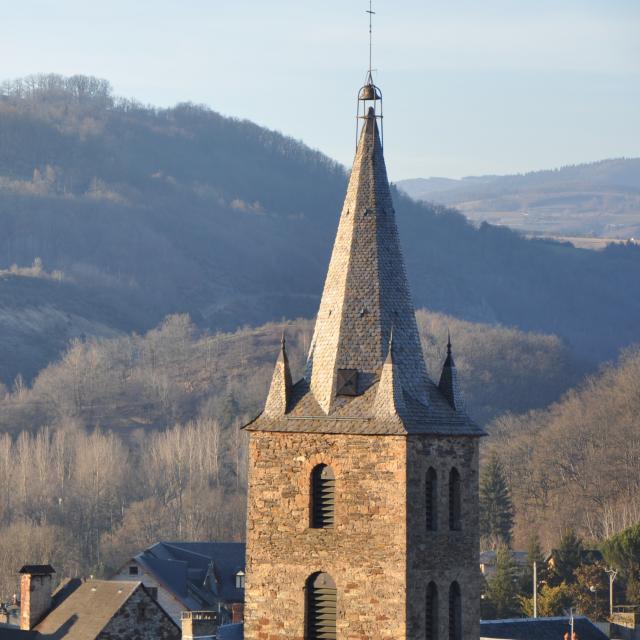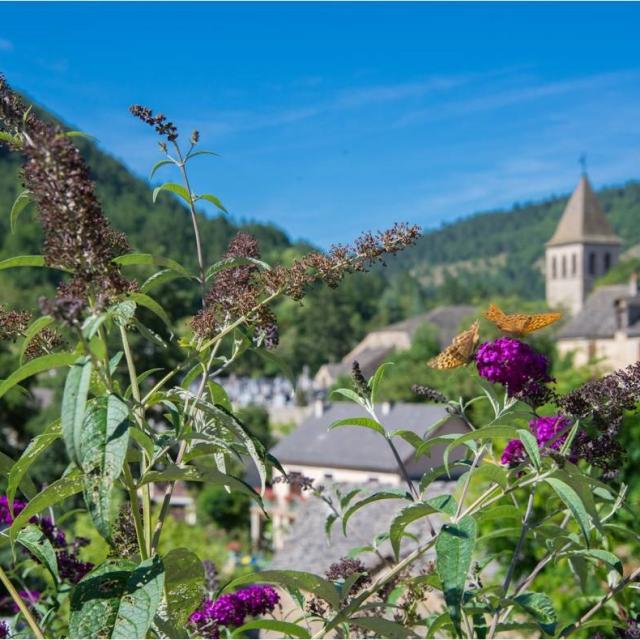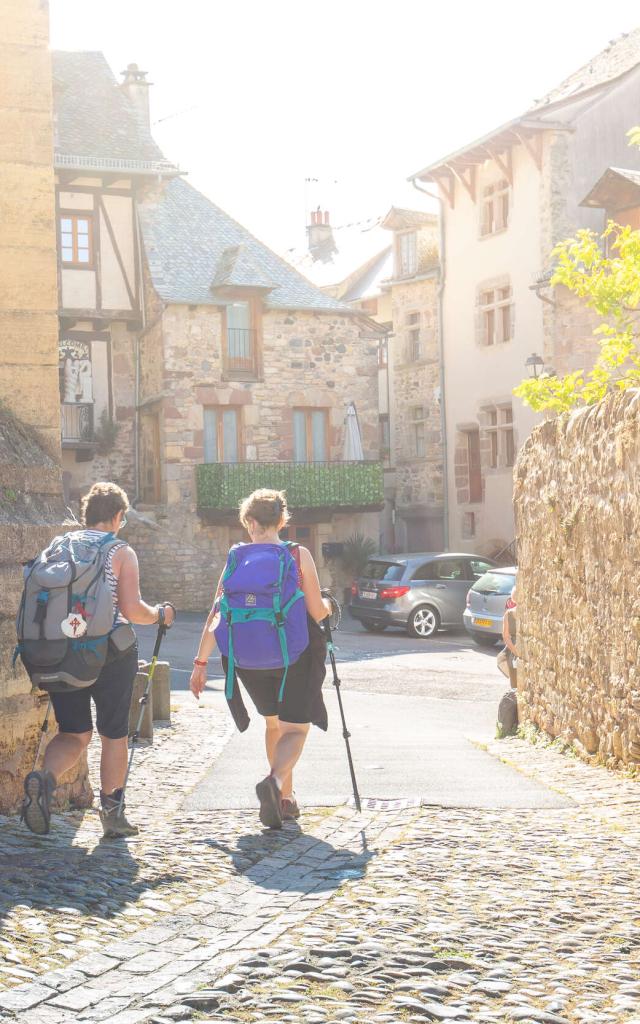 Saint Come D'olt (4)© B. Colomb Lozere Sauvage Pour Pact Aubrac © B. Colomb Lozère Sauvage Pour Pact Aubrac
Saint Come D'olt (4)© B. Colomb Lozere Sauvage Pour Pact Aubrac © B. Colomb Lozère Sauvage Pour Pact Aubrac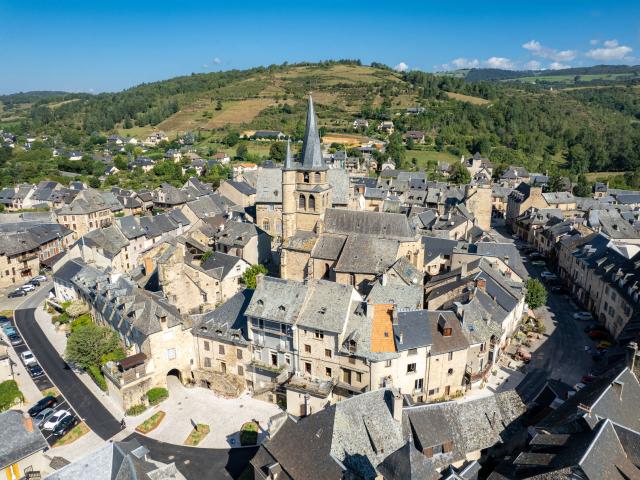 Saint Côme D'olt © B. Colomb Lozère Sauvage;aveyron Attractivité Tourisme(2)
Saint Côme D'olt © B. Colomb Lozère Sauvage;aveyron Attractivité Tourisme(2)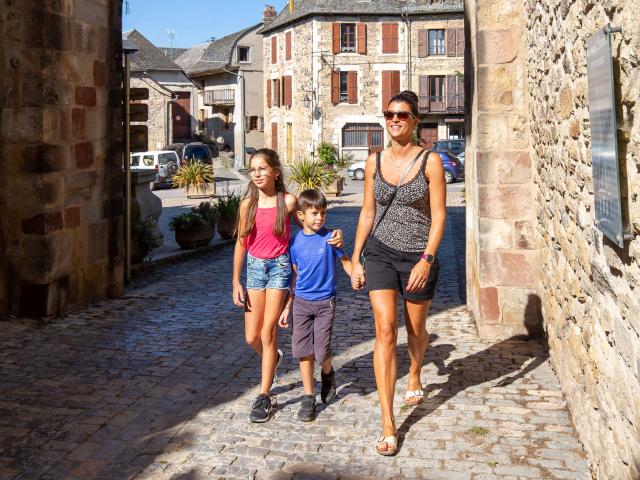 Saint Come D'olt (10)© B. Colomb Lozere Sauvage Pour Pact Aubrac © B. Colomb Lozère Sauvage Pour Pact Aubrac
Saint Come D'olt (10)© B. Colomb Lozere Sauvage Pour Pact Aubrac © B. Colomb Lozère Sauvage Pour Pact AubracSt-Côme-d’Olt
A stage on the road to Santiago de Compostela
At the time of the Crusades, Saint-Côme-d’Olt was no more than a small settlement in the Bouisse (boxwood) district, not far from the Gallo-Roman road linking Rodez to Javols. An infirmary was located near the Bouisse chapel. It welcomed weary travelers and pilgrims after their arduous crossing of the Aubrac, Saint-Côme being located on the Via Podiensis of the pilgrimage to Santiago de Compostela.
